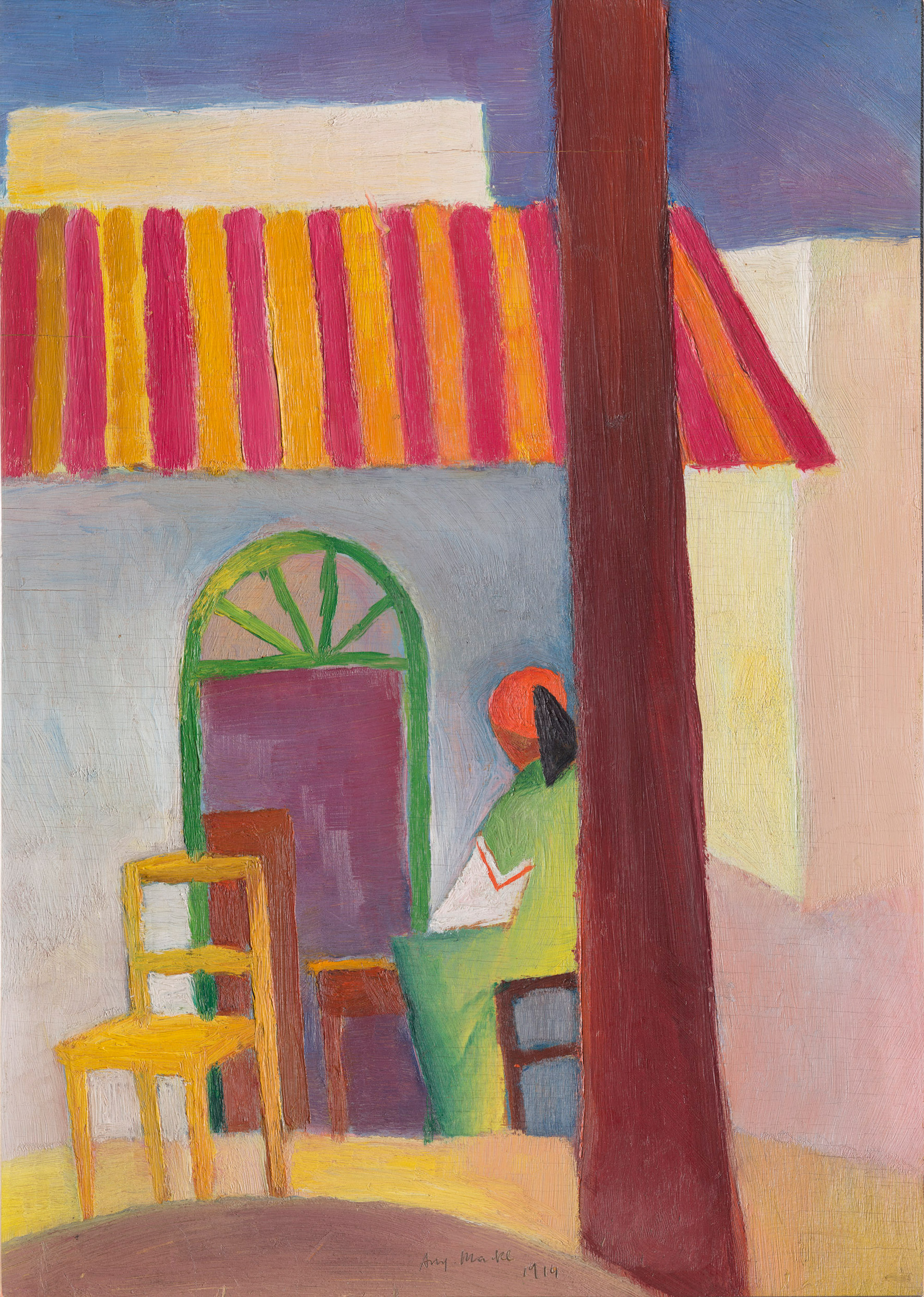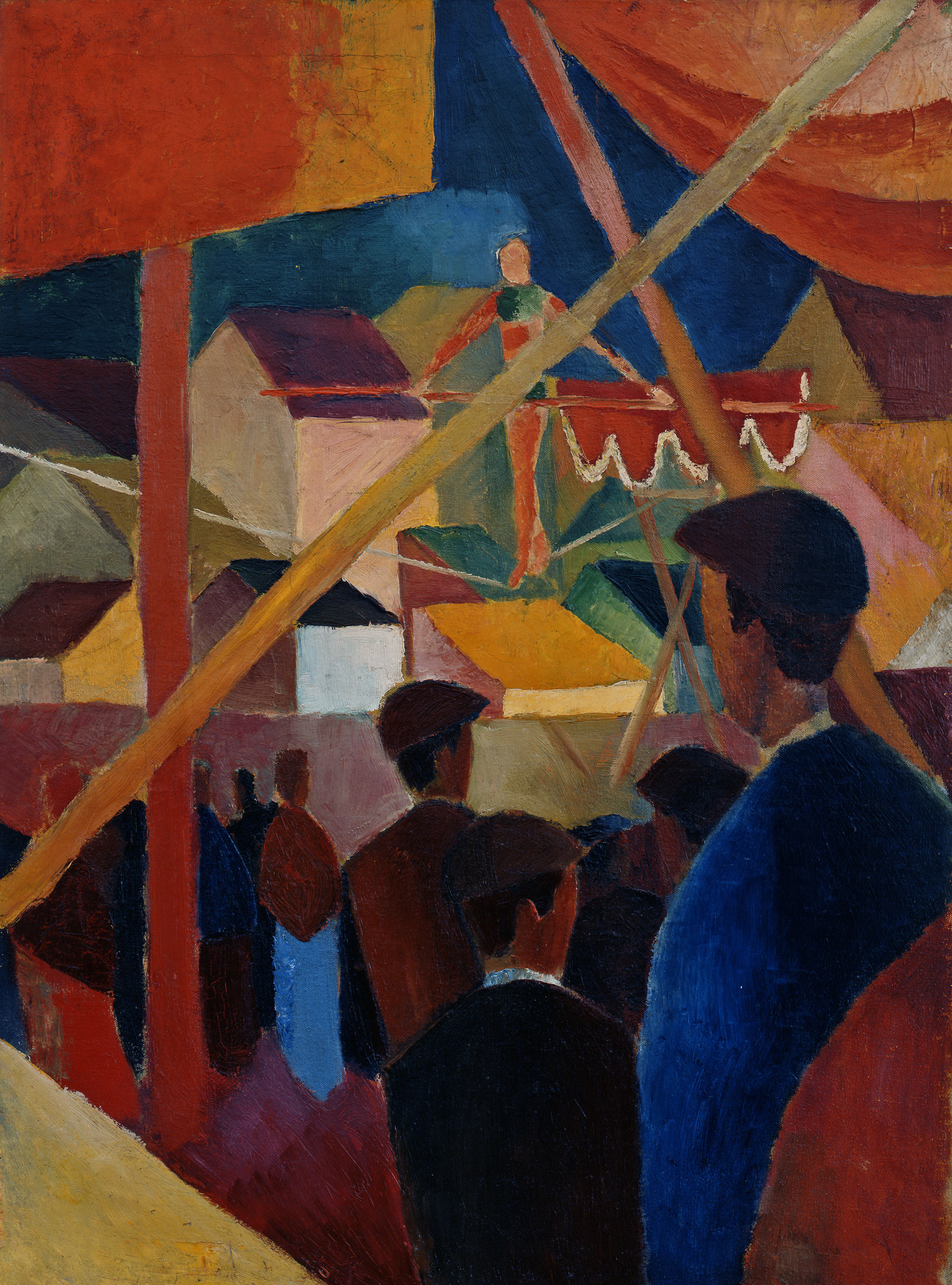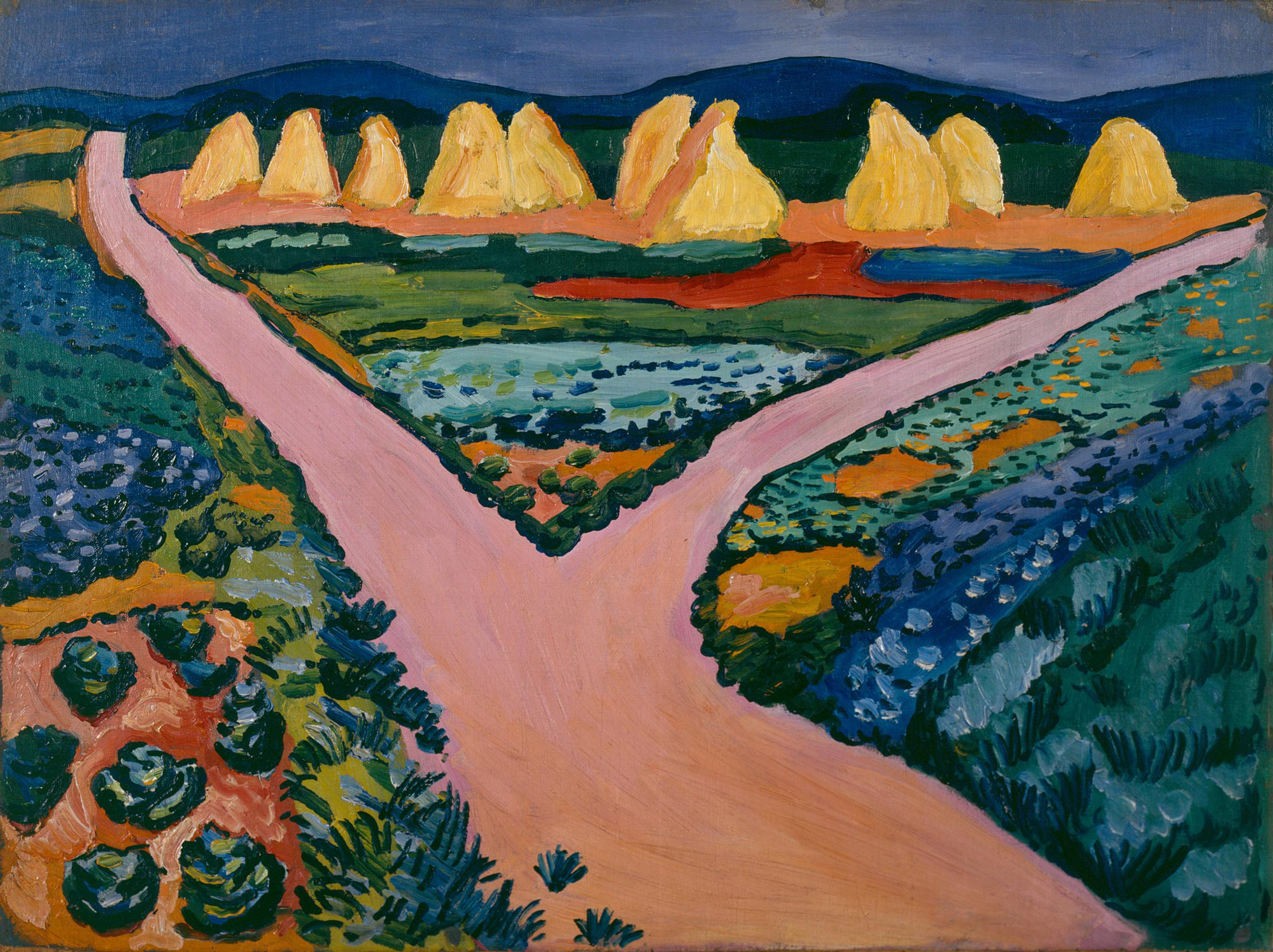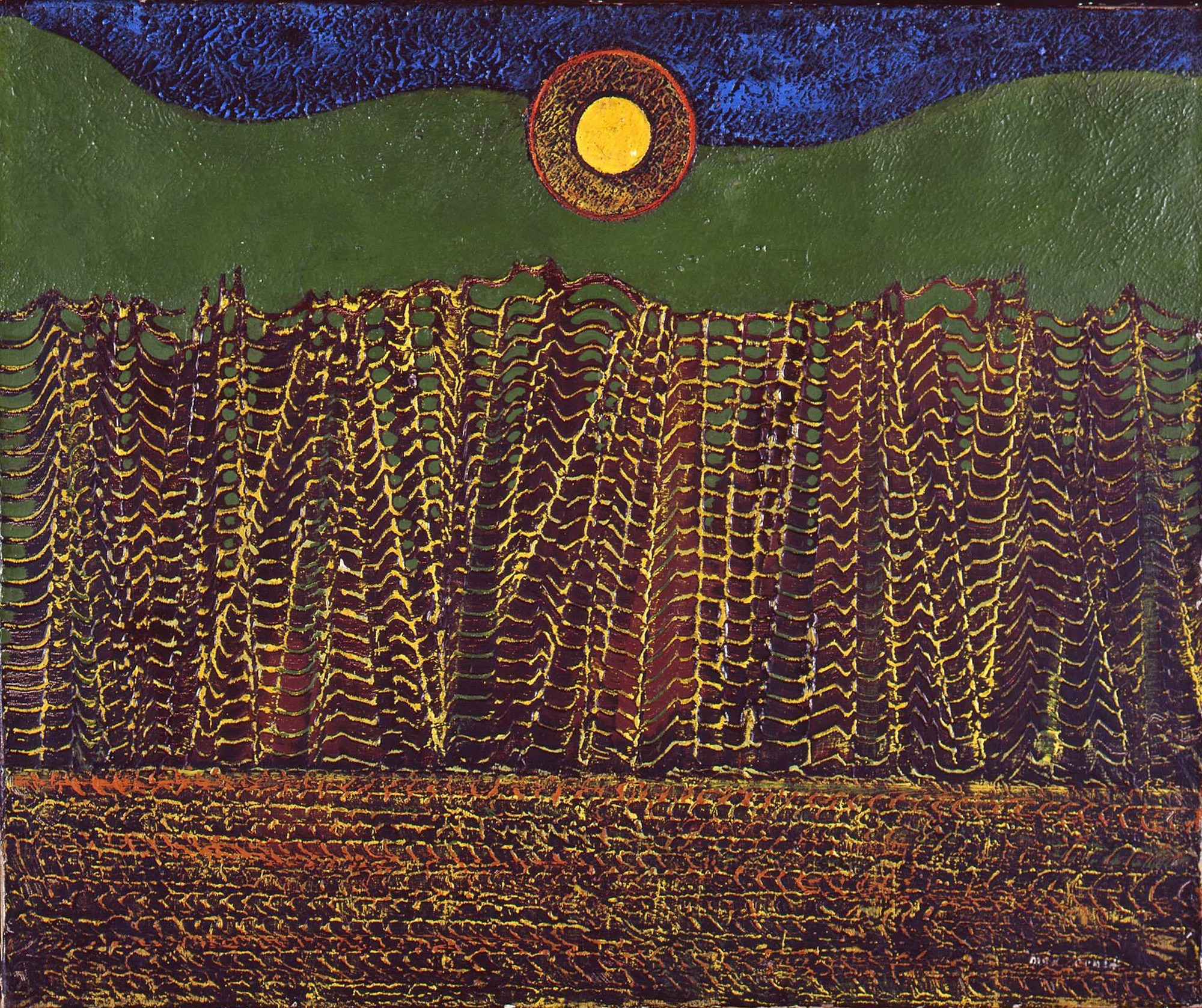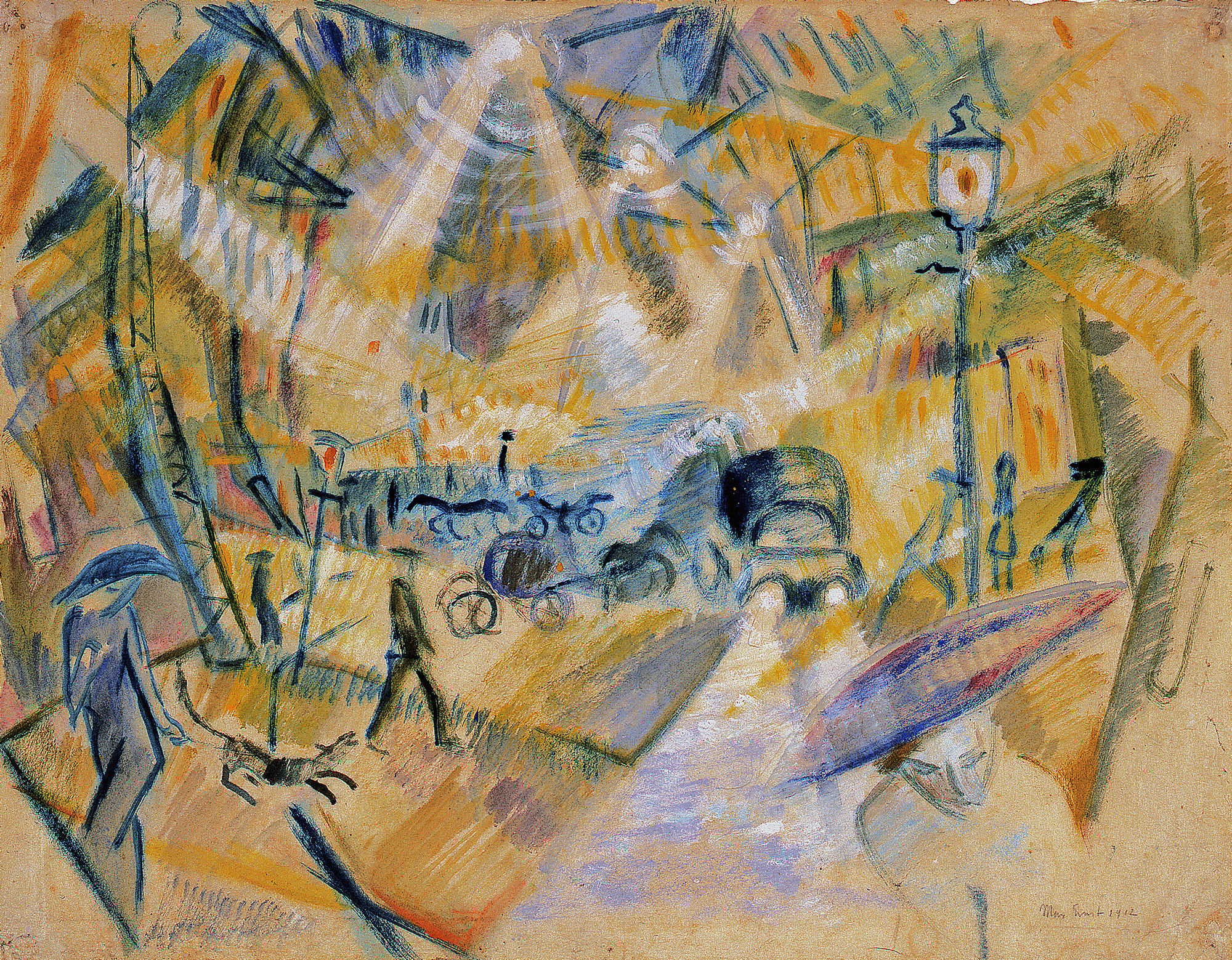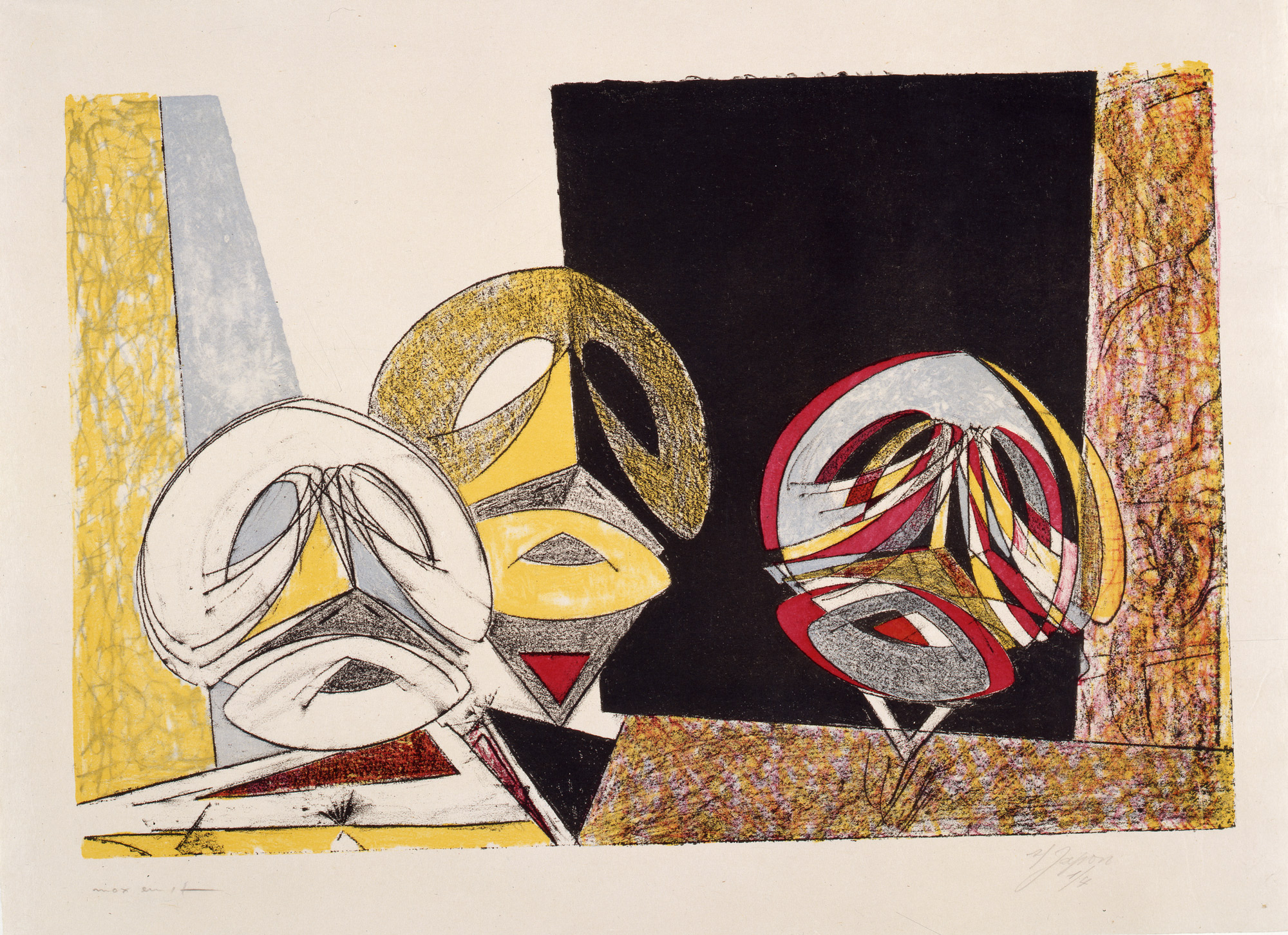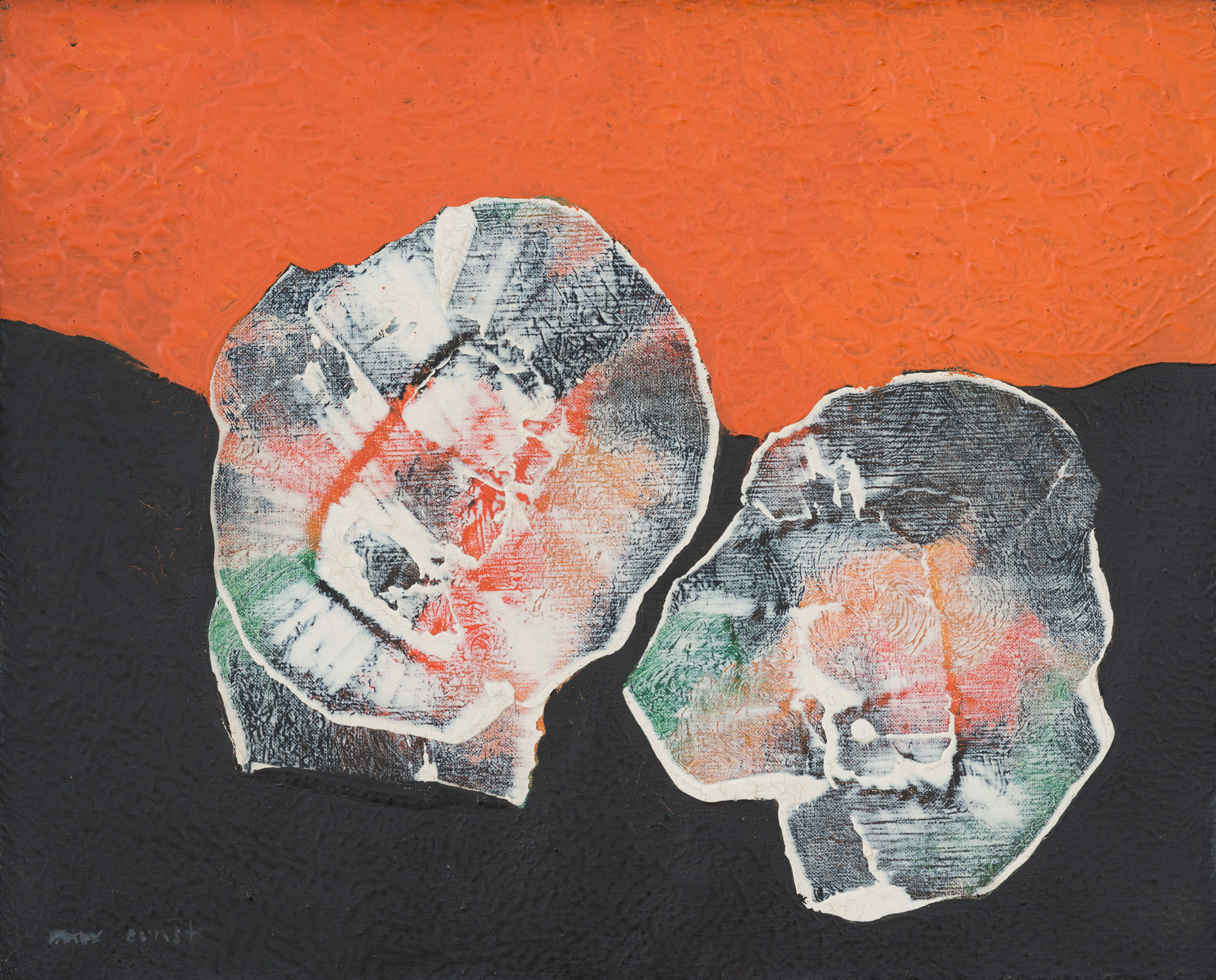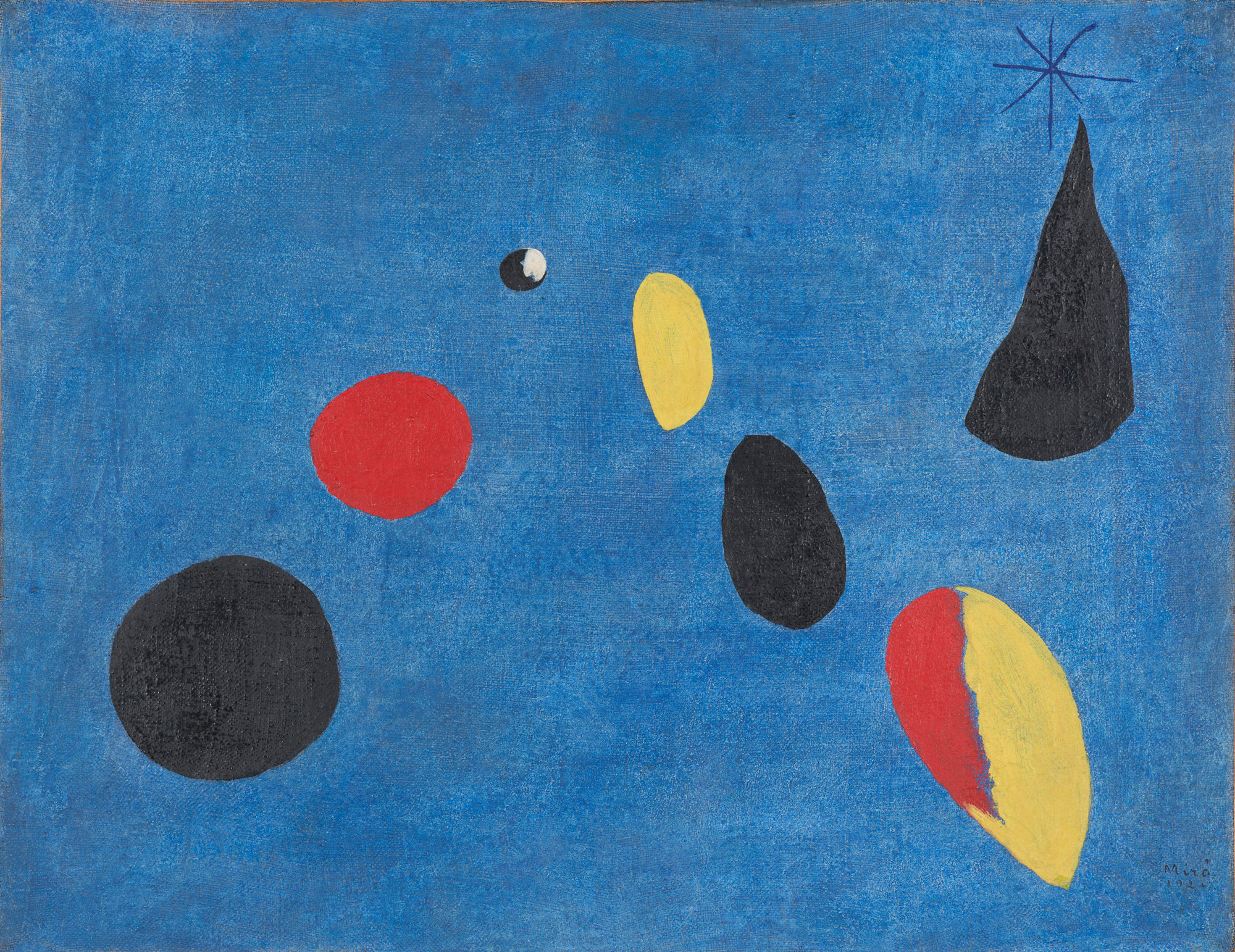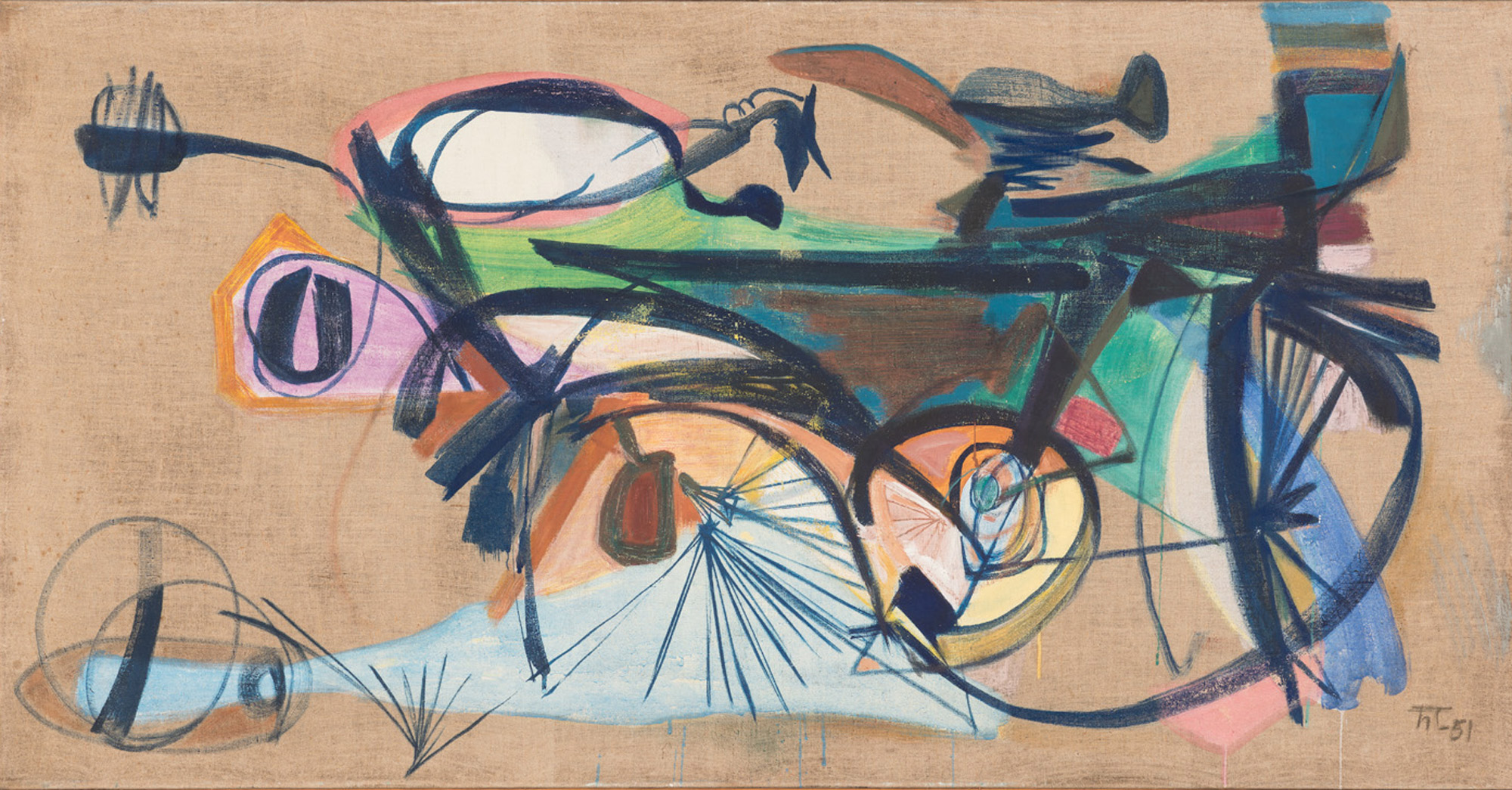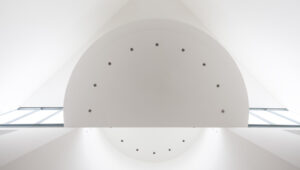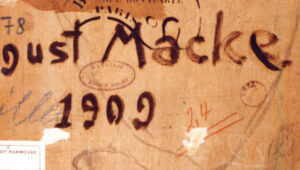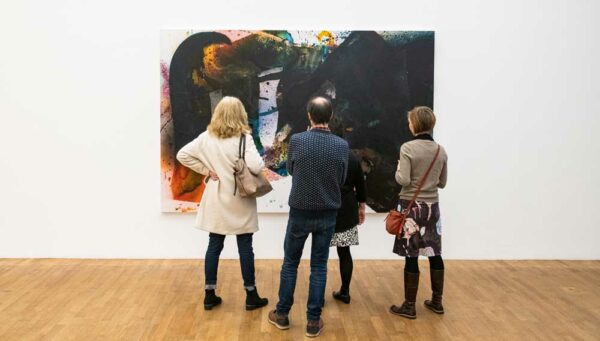
August Macke, Gemüsefelder, 1911, Kunstmuseum Bonn, photo: Reni Hansen
Classic Modernism
“… in these last days I would have had good reason to work in explosion-protected spaces. Much has been bursting out of me…” writes August Macke to his artist friend Franz Marc in 1910.
Not only Macke’s inner life but the entire world is suffused with nervous tension. But the radical upheavals it will experience with the outbreak of the First World War in 1914 have not yet come to pass.
It is the paintings Seiltänzer (1914) and Türkisches Café (1914) from that era, whose acquisition in 1949 marks the beginning of the Kunstmuseum Bonn (developing out of the private Obernier Collection) and simultaneously gives the starting signal for one of the most extensive Macke collections in the world.
The brief history of the creative output of August Macke (*1887 in Meschede – † 1914 near Perthes-lès-Hurlus, Champagne, FR), abruptly ended by the First World War, is tightly interwoven with Bonn. It was here that he lived for a few years with his family, set up a studio and, in 1913, organized the exhibition entitled Ausstellung Rheinischer Expressionisten (“Exhibition of Rhenish Expressionists”). He thereby self-confidently demonstrated the existence of an artistic center in the West in addition to Berlin (Die Brücke) and Munich (Blauer Reiter).
With the early purchase of works by sixteen of the artists who participated in that exhibition, the Kunstmuseum Bonn establishes a collection focus (including various media such as paintings, prints and sculpture) on Rhenish Expressionists such as Heinrich Campendonk, Franz Seraph Henseler, Franz M. Jansen, Helmuth Macke, Carlo Mense, Heinrich Nauen, Paul Adolf Seehaus and Hans Thuar. Further works of classic modernism such as Formes circulaires, Lune N° 2 (1913) by Robert Delaunay and works by Alexej von Jawlensky as well as the art of Die Brücke by Ernst Ludwig Kirchner, Erich Heckel and Karl Schmidt-Rottluff expand the perspectives of our collection of classic modernism.
Since 2016 the permanent loan of the Wilfried and Gisela Fitting Collection has added well-known works to the collection of classic modernism and deepened its focus on Max Ernst.
Collection Focus
August Macke
August Macke (1887 in Meschede – 1914 near Perthes-lès-Hurlus, Champagne, FR) stands with his oeuvre as a splendid example of the curiosity of a young generation of artists who, at various places in Europe and subsequently in America as well, embark on an undertaking to establish a new perception of the world along with a new sense of life itself—or in many cases, even to issue provocation through deliberately staged scandals:
“All these things,” writes Macke in 1913 in a letter to a friend, “Cubism, Futurism, Expressionism and abstract painting are only the terms for a change of direction that our painterly thought wants to make and is making.”
His works are characterized by the vitality and sensuality of life.
This is reflected in the forcefulness and beauty of the colors, which often extend past the individual, inner-pictorial forms and conquer the entire picture. Without adhering rigidly to an artistic manifesto or radicalizing his visual language one-sidedly, August Macke remains open to many influences and stimulations in his artistic thinking, even while creating an independent oeuvre which offers an exemplary summary of the particular characteristics of Rhenish Expressionism. His gaze is thereby directed to the “West”: towards France, to Paris where, in the works of Robert Delaunay, he considers himself to have found a kindred spirit.
With paintings, sculptures and prints, the extensive Macke Collection of the Kunstmuseum Bonn includes works from all phases of the artist’s creative output.
Max Ernst
Already quite early in his artistic career, which was marked by multiple emigrations, Max Ernst (1891 in Brühl – 1976 in Paris, FR) came into contact with August Macke and his Rhenish colleagues in Bonn, where Ernst was studying. Macke, with whom he developed a friendship, invited him to participate in the Ausstellung Rheinischer Expressionisten (“Exhibition of Rhenish Expressionists”).
Particularly in the area of graphic art, Max Ernst’s creative spirit constantly experiments with artistic techniques. This gives rise to visual languages which open up an altered view not only onto the external world, but also onto psychological-fantastical inner worlds. In his text Jenseits der Malerei (1936), he observes “[…] with how much obsessiveness my disturbed eye was focused on the pages of a pictorial catalogue in which objects were reproduced for anthropological, microscopic, psychological, mineralogical and paleontological inspection. Standing in stark juxtaposition were pictorial elements which were so extremely diverse that the very senselessness of this strange proximity caused a sudden sharpening of the visionary powers within me and awakened a hallucinatory succession of contradictory […] images […].”
In this so-described perceptual process of a direct encounter between highly divergent objects, there lies one of the keys of Surrealism, among whose central representatives Max Ernst is to be reckoned.
In 1952 the Kunstmuseum Bonn purchases Ernst’s painting Grätenwald (1926). Through the acquisition in 1987 of the Hans Bolliger Collection, which contains numerous illustrated books and printed graphics, the painting becomes situated within a more extensive context of creative output which conveys the entire development of the artist. This establishes a major focus of the collection, which is expanded by an ensemble of five sculptures—a permanent loan of the Federal Republic of Germany—and allows the artist to make his appearance also as a sculptor. Since 2016 with the permanent loan of the Wilfried and Gisela Fitting Collection, more than forty important works by Max Ernst have come to augment this collection focus.
Works
Fitting Collection
The Wilfried and Gisela Fitting Collection comprises more than 200 works by thirty artists, which contribute to a deep understanding of the art of the entire twentieth century. It is characterized by extensive groups of paintings, sculptures, drawings and prints by Max Ernst, Hans Arp, Pablo Picasso, Georges Braque, Hann Trier and Eduardo Chillida. But in addition, individual works by such artists as Joan Miró, Henri Matisse, Paul Klee, Alexej von Jawlensky and Meret Oppenheim all the way to David Hockney, Roy Lichtenstein, Antoni Tàpies and Rosemarie Trockel point to the breadth of the collection.
The collection of Gisela Fitting (1918 – 2004) and Wilfried Fitting (1919 – 2012) was assembled since the end of the 1950s. The collectors pursued artistic themes which give central importance to poetical inventiveness and to an encounter with nature.
The works, created between 1907/08 and 1993, reflect the interest of the collectors in what was for them contemporary art. This is likewise evident in the friendships they cultivated with individual artists.
Since 2016, the collection has found a place at the Kunstmuseum Bonn as a permanent loan. The Stifterverband für die Deutsche Wissenschaft is responsible for the Prof. Dr. med. Wilfried und Gisela Fitting Stiftung. The works of the collection deepen already-existing positions such as Max Ernst, or they provide a fundamentally new definition of other central focuses. In the future, the loans made available by the foundation will be the subject of scholarly research and will be made available to the public as a vital part of the museum’s presentation of its own collection.
